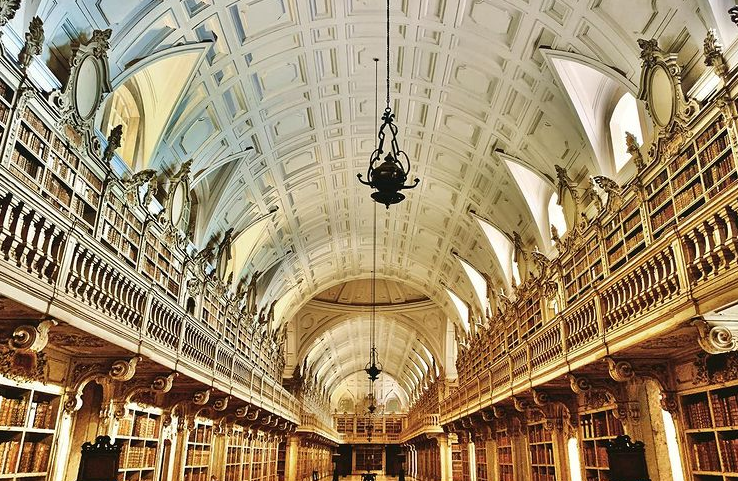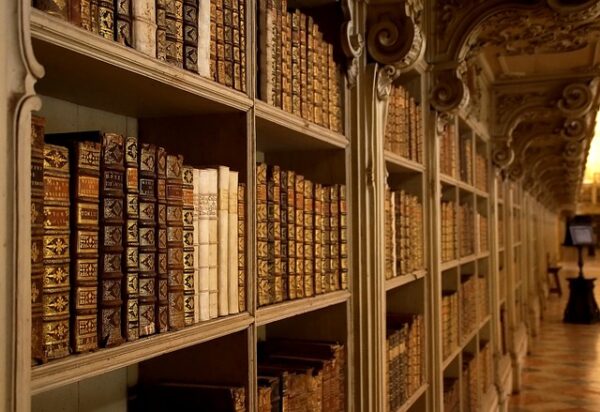Pay a visit to Mafra National Palace
Pay a visit to Mafra National Palace. Mafra is a village. It is a village known for its Monument, a large stone monument. Mafra is Marble. Mafra is, in the words of a Swiss traveler (Merveilleux) of the 18th century, the “metamorphosis of gold into stone”. Mafra is Art. Cosmopolitan art. Art with magnificence. Mafra is Art with meaning – the setting, the spectacle and the representation of power. Mafra is the splendor of Baroque!
The Royal Palace occupies the entire noble floor of the Mafra building and the two towers, being the one connected to the King’s Palace and the North’s Palace. by a long gallery of 232 m – the longest palatial corridor in Europe – used for the “walk” of the court, so in the taste of the century. XVIII. Here royal audiences were expected, jewelry and dresses were displayed or political and amorous intrigues were woven…
The King’s Palace and the Queen’s Palace functioned separately, each with their own kitchens in the basement, pantries and ucharias on the ground floor, the Chamberlains or Ladies bedrooms on the 1st floor, the royal apartments on the main floor and servants on the mezzanines (Attics). For the princes, a palace at the northeast end of the building was intended, and for the princesses another one at the Southeast. Both also worked separately.
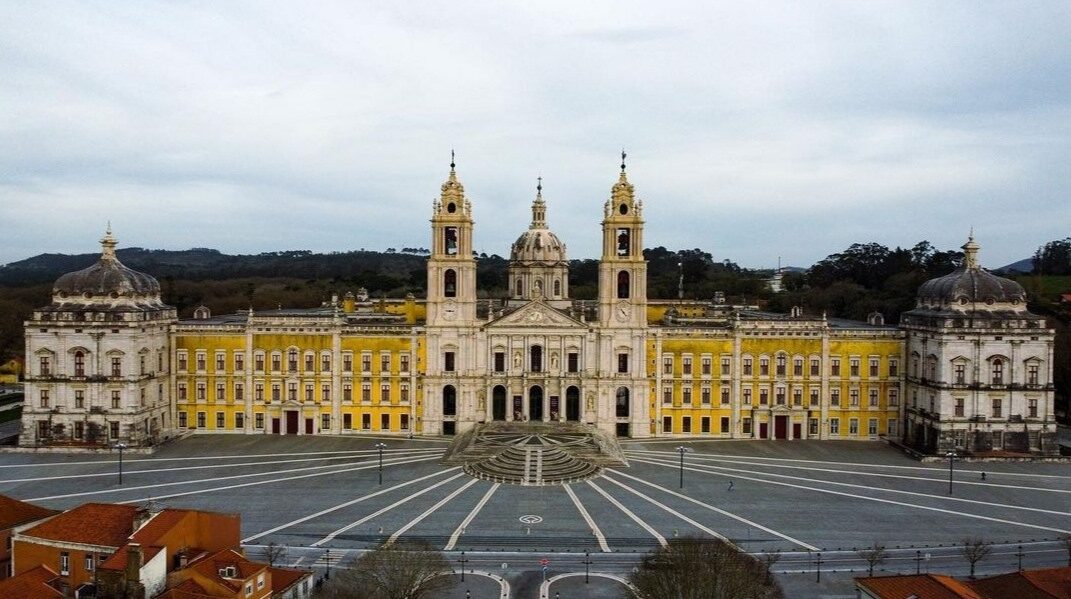
Originally decorated with Flemish tapestries, oriental rugs, and furniture commissioned here, the Palace will undergo a profound change during the time of D. João VI, who commissioned a mural decoration campaign in several rooms, under the responsibility of Cyrillo Volkmar Machado. Many of these tapestries, paintings, and furniture were taken by the Royal Family to Brazil in 1807, from which they did not return.
This organization of spaces was maintained until the death of D. Fernando de Saxe-Coburgo, husband of Queen D. Maria II, when the entire Royal Family lived only in the turret and the south wing, with the north turret being reserved for guests important people visiting Mafra. The south wing underwent some occasional and decorative works, namely during the marriage of D. Pedro V and D. Estefânia de Hohenzollern-Sigmaringen, during the reign of D. Luís and D. Maria Pia de Sabóia and D. Carlos and D. .Amelia of Orleans.
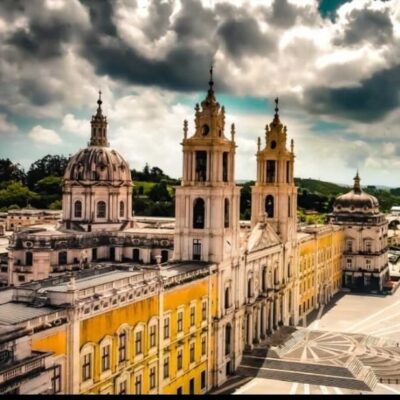


This is a Portuguese monument that best reflects what we can describe as a completed & multifaceted work of art: architecture, sculpture, painting, music, books, textiles… in short, a typologically diverse heritage, coherently thought out and carefully commissioned for this Palace/Convent/Basilica/ Covered and that here configures a unique reality.
In an area of about 40,000 sq m we encounter a remarkable architectural project that was carried out without gaps or remedial solutions. Everything here is marked by a quality stamp of sorts that only Joanina’s generosity could and knew how to demand: excellent materials, bold solutions, and exquisite execution. Architecture models feature connected by kilometers of corridors and over 150 staircases.
Engineering pervades the entire monument, from the dome to the underground. For Mafra, the best were chosen and the best were chosen: Ludovice and Custódio Vieira in architecture, Francesco Trevisani and André Gonçalves in painting, Volkmar Machado and Domingos Sequeira in mural painting, Carlo Monaldi and Machado de Castro in sculpture, Witlockx and Levache in chimes, Peres Fontanes and Machado Cerveira in organs are some of those who contributed to configure this heritage.
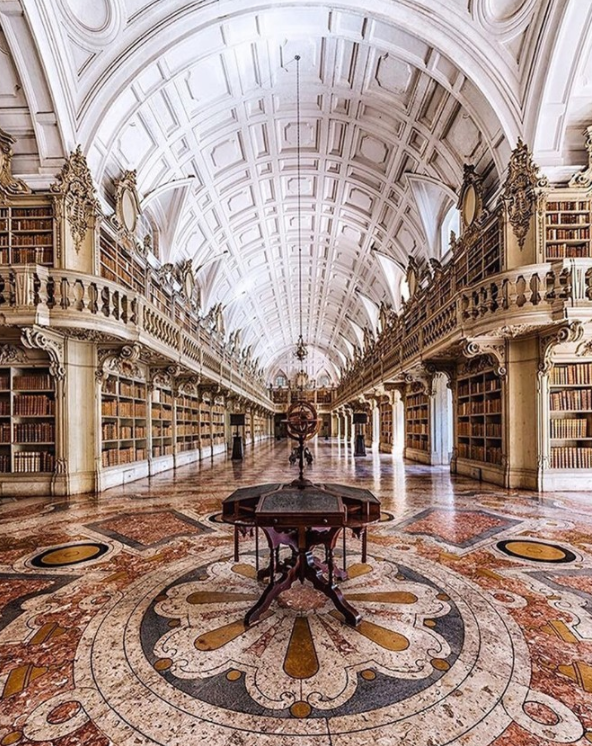
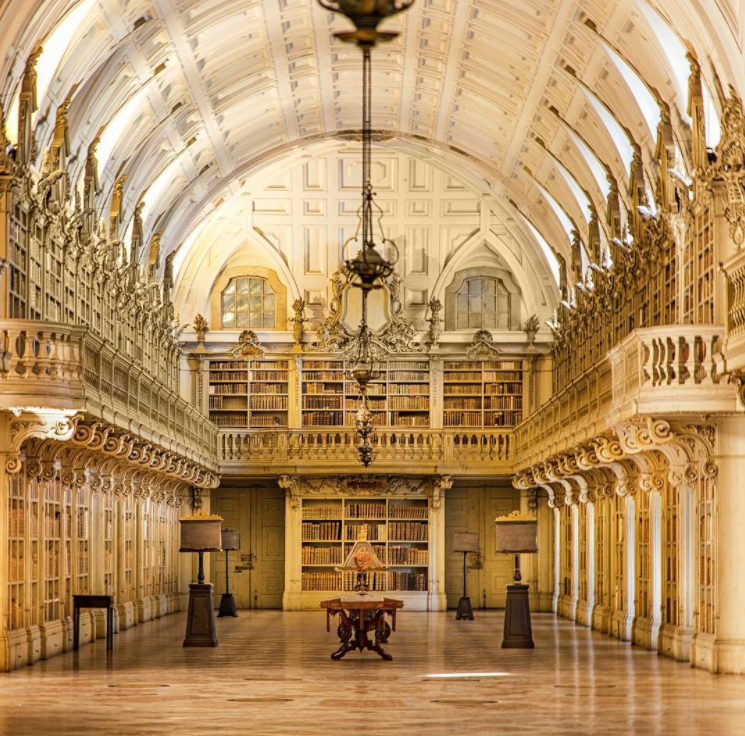
When we visit this monument we feel that it is a different experience. Different because the singularities that can be experienced here are unparalleled in any other place: an 18th-century Hospital complex, two monumental 18th-century Chimes, a (unique) set of Six Pipe Organs and one that is considered by many as being the most beautiful historical library in the world, they configure this heritage which, in its genesis, is a Franciscan Convent, a King’s Palace, a Queen’s Palace, a Library, a Basilica and a Tapada.
For many visitors, the library of the palace is the star of the place. It is considered one of the most impressive in the world, a combination of royal opulence and Rococo aesthetics that makes one feel of entering a temple. A secular temple of knowledge consisted of more than 36,000 leather-bound volumes that line the wooden bookshelves. Even if this European treasure of a library stood on its own the visit would be worth it. More
